#the european archaeologist
Explore tagged Tumblr posts
Text
THE EUROPEAN ARCHAEOLOGIST
El catedrático por la Universidad de La Laguna José Farrujia, defensor a ultranza del legado aborigen canario y de sus descendientes, es premiado por su labor de investigacion y divulgador de nuestra historia; que Acoran de acompañe y que Magec te ilumine.
José Farrujia
RECONOCIMIENTO INTERNACIONAL AL PATRIMONIO RUPESTRE CANARIO
Me alegra compartir con ustedes esta noticia:
🏆 Me han concedido un premio internacional por la fotografía que ilustra esta publicación, del yacimiento rupestre de El Verde (El Paso, La Palma).
🌀 El premio lo concede la European Association of Archaeologists, bajo el lema The European Archaeologist Photojournalist of the Year.
📖 La foto fue tomada por mí en el marco de un proyecto de innovación educativa en el que venimos trabajando desde la ULL, desde el Área de Didáctica de las Ciencias Sociales, en relación con la educación patrimonial en la formación inicial del profesorado del grado de Educación Primaria.
🔝 El premio, sin duda, supone un reconocimiento internacional a los valores patrimoniales de Canarias y es una muestra de que, la arqueología y la educación patrimonial pueden mantener vivo el eco del pasado y, al hacerlo, nos ayudan a comprender mejor nuestro entorno y su valor.
✅El premio implica, entre otros aspectos, la reproducción de la foto en la portada del boletín insignia de la arqueología europea, The European Archaeologist, que se difunde entre los más de 11.000 miembros de la asociación, procedentes de más de sesenta países de todo el mundo. Asimismo, la imagen se difunde como parte de las actividades promocionales de la entidad y en sus redes sociales, con lo que ello implica para la divulgación de los valores del patrimonio arqueológico canario en el ámbito internacional.
❗️Gracias a la Asociación Iruene La Palma por su tremenda labor de investigación y difusión de la cosmovisión de los antiguos palmeros y, en especial, a su presidente, Miguel A. Martín Iruene la Palma. Sin su aportación, probablemente, esta foto no hubiera existido...
ℹ️ Más información, aquí 👇🏻
https://www.ull.es/.../jose-farrujia-premio-fotografia.../
https://www.facebook.com/afarruji/posts/pfbid04tMZ6vdV27w3RwUUvgcAWQeFNRbXkiKGH4e5sZQr51sJzLByBskWunE9McBezbHXl?__cft__[0]=AZX2TWLkZa1RcddTXEr1OAvFJQG9VvxycZJrmop8mPBEBtZOxDPNUnL0Vj7UA__DcFVkUOs6T2L6NyYwtbdUCEE1sz_U4ktALqmYpE67awx0n5TjRFPD8AIwoUBvFmxN0EUjdwOcdGZjdde98VpmdshmFoqE3Aoo2G-hqCqlcAtMpQ&__tn__=%2CO%2CP-R
#indígenas_canarios #historias #indigenas #patrimoniocultural #patrimonio #lapalma #ull #educacion #islascanarias #felicidad

#jose farrujia#indigenous#aborigenous#history#culture#genocide#unesco#archeology#united nations#international criminal court#court penal international#the european archaeologist#canary islands#aborigenes#indigenas#historia#cultura#genocidio#arqueologia#naciones unidas#corte penal internacional#islas canarias#canarias la colonia mas antigua del mundo#canarias tiene identidad cultural propia#patrimonio canario#descolonizacion de canarias#canarias#onu#cpi#icc
0 notes
Text

Young Girl at the Excavations of Pompeii
by Filippo Palizzi
#filippo palizzi#art#excavation#excavations#excavating#history#antiquity#archaeology#europe#european#pompeii#italy#southern italy#girl#maiden#archaeologists#architecture#ancient rome#ancient roman#roman#ruins#fresco#frescoes#painting
876 notes
·
View notes
Text
Yggdrasil

Yggdrasil is a tree from Nordic myth that acts as an Axis Mundis, a way to connect different “worlds” to the one we know.
The world tree was previously labeled as a European Ash, but research from 1911 suggests it may be a Taxus instead. Taxi were called “needle ash” in Old Norse which may have let to the confusion. The Eddic texts mention Yggdrasil as vetgrønster vida, meaning “evergreen”, which ash trees are not. The importance of evergreens was established well before the Vikings, going as far back as the Iron Age. It is no coincidence that our current Christmas trees are evergreens.
One of the meanings to Ygg is “ageless, everlasting or age-old”, taxi can live tens of thousands of years. Yggdrasil and Odin are completely intertwined, with both the god and the tree representing drift.
Image credit: unknown Danish engraver for Oluf Olufsen Bagge’s “Prose Edda”, 1847
#frankish#merovingian#viking archaeology#archaeology#carolingian#charlemagne#field archaeology#viking mythology#merovingian archaeology#germanic mythology#norse mythology#anglo saxon#viking#field archaeologist#frisian#odin#vikings#germanic#germanic folklore#germanic archaeology#wodan#anglo saxon archaeology#history#jewelry#norse#yggdrasil#European ash tree#ash tree#taxus#botany
37 notes
·
View notes
Text
expanding on my tags here a lil bit, I do think ml Scala is meant to take inspiration from multiple different european places but it really is very very italian to me. Like there’s the battle theme and architecture and potential symbolism yeah, but…hmm. Maybe I’m partly pulling from personal experience. I’ve visited Rome before so when I look at some of the shots in ml, mostly the nighttime ones, I just remember walking around the streets the first night I was there and how soft and warm the lighting was. It just feels the same to me somehow, which, if anything, is a testament to the amount of care and attention that was put into developing this version of Scala (from the devs themselves and in-universe ;) )
#roadie rambles#I’m fascinated by the progression of architecture between daybreak -> ml scala -> dr scala in general#bavarian to romanesque/gothic to cycladic…it’s like they’ve been giving us a tour of european architecture in this one world alone 😄 how fu#n#symbolic too perhaps#this is why I like to think early scala (overmorrow scala) is a bit different too; more cammarata and mont st michel#inspired#in my head scala just changes with every generation to suit the needs of the people#can’t tell if that would be fascinating or frustrating for a historian/archaeologist haha#anyway that’s my daily brain dump thanks for coming to the ted talk ❤️#scala culture
13 notes
·
View notes
Text
by Stephen M. Flatow
Abbas has made similar outlandish claims on many other occasions. In one 2019 speech at Jalazoun, near Ramallah, he declared: "This land belongs to the people who live on it. It belongs to the Canaanites, who lived here 5,000 years ago. We are the Canaanites!”
Ironically, those darn archaeologists have also documented that the Canaanites, with whom Abbas so closely identifies, practiced child sacrifice. And, of course, the Palestinian Authority and Hamas practice various kinds of child sacrifice of their own, such as using sending children to carry out terrorist attacks and using Arab children as human shields against Israeli counter-terror strikes.
Perhaps the Palestinian Arab leaders could claim to be the spiritual descendants of the Canaanites, even though they are not their literal descendants because the Canaanites were wiped out by Assyria and others.
The Palestinian Arabs and their supporters are naturally frustrated that archaeologists have never found evidence to back up their cause. No evidence of any “Palestinian” kingdoms, no ancient artifacts showing a distinctly “Palestinian” culture or society. That’s because the Arabs in the Land of Israel arrived after Mohammed and began identifying themselves as Palestinians only in the 20th century, and even then, only as a propaganda tactic in their war against the Jews.
No wonder the European Union—which passionately supports the Palestinian cause—is so worried about the archaeologists. Last year, EU officials drew up a document outlining their strategy for helping the PA to claim territory which—in accordance with the Oslo accords—is located in the Israeli controlled region known as Area C.
One part of the EU document referred to the need “to monitor Israeli archaeological digs in Area C.” Why are the EU and the PA anxious about archaeological digs? Because, as Prof. Garfinkel has reminded us, every time archaeologists dig, they find fresh evidence of the Jews’ deep roots in the Holy Land—and no evidence of any “Palestinian” roots at all.
#archaeology#archaeologists#mahmoud abbas#palestinians#european union#palestinian arabs#palestinian authority
20 notes
·
View notes
Text
Inktober 2023 ; Day 1/31
Day 1 : Dream / Rêve
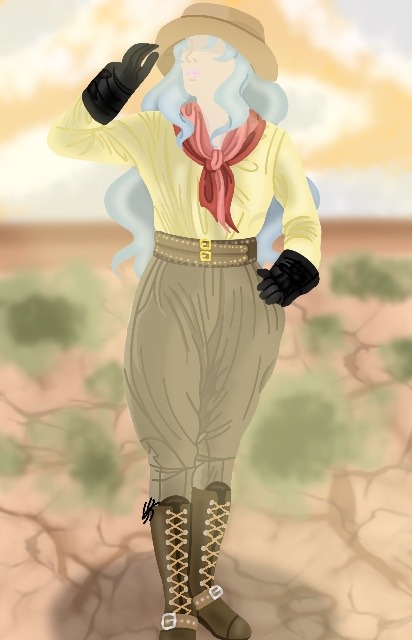
"Oh, my ! Sorry, I didn't noticed how close I was to the border of the hilll. I suppose I was too amazed by the beauty of the ruins.
Yes, I love ruins that is why I aim to become an archaeologist."
This was what Sophie said when we were first introduced to her in Beyblade Metal Masters. Yep it was her first words.
So this drawing represents her dream fully coming true, as she has an archaeologist outfit.
Also yes : I've decided to do Minimalist Art for this Inktober because this is something that I absolutely loves to do ♥
#inktober#inktober 2023#dream#rêve#beyblade#beyblade métal masters#beyblade métal saga#sophie#excalibur#european team#european union team#archéologue#archaeology#archaeologist
9 notes
·
View notes
Note
As someone who has Norse mythology class last semester, there's been theories around that Odin used Seidr to control Tyr and forced him to bind Fenrir.
We have an ongoing joke in class Tyr closed his eyes one night then woke up four days later in the healing wing minus a friendship and a hand.
Oh shit that's interesting! That's one way to justify janking Fireboy like that. StarClan's divine madness anyone?
#European mythologies is a thing I mostly dabble on#academically I'm much more well versed on Mesoamerican stuff because archaeologist from Guatemala#and Egyptian stuff because life-long interest and also now literally my religion#so I really appreciate y'all more educated on it pitching in
4 notes
·
View notes
Text
The tiktok lady who doesn't think Rome is real makes me mad, but only because I'm an actual archaeologist who's been saying that as a bit for years. Stolen Valor.
People on this website will really mock anti-vaxxers and flat earthers for ignoring scientists and getting their alternative facts from facebook, and then turn around and insist they know more history than historians and more archaeology than archaeologists because they read an unsourced tumblr post once
#im not on tiktok but that lady owes me 5% of her ragebait clout#i am an actual archaeologist btw im not making that up#i just work in the americas now#tbh it's for the best that yall dont talk about precontact archaeology when theres this much misinfo on just the european and mediterranean
77K notes
·
View notes
Text
youtube
#EAABelfast#EAA2023#European Association of Archaeologists#European Association of Archaeologists Annual Meeting#archaeologist#archaeology#gibraltar#art history#rock art#art#cave art#cave painting#cave paintings#bernie taylor#before orion#Black Hills#Lakota#Native American#Youtube
1 note
·
View note
Text
I think people forget that the Nazis never said they were the bad guys. If someone says, hey, I’m evil! You don’t let them take over your country. They presented themselves as scientific, not hateful. By their own account, they were progressives, and the superiority of White Europe over the other races was a proven and immutable fact. They had scientists and archaeologists and historians to prove it. They didn’t tell people they wanted to kill the Jews because they were hateful. They manufactured evidence to frame us for very real tragedies, and they had methodological research to prove that we were genetically predisposed to misconduct. Wouldn’t you believe that?
Hollywood has spent the last 80 years portraying the Nazis as an obvious and intimidating evil. That’s a good thing in some ways, because we want general audiences to recognize that they were evil. But we also want them to be able to recognize how and why they came to power. Not by self-describing themselves as an evil empire, but by convincing people that they were the good guys and the saviors. They hosted the Olympics. Several European countries capitulated and volunteered themselves to the Empire. There were American and British Fascist Parties. They had broad public support. Hollywood never shows that part, so general audiences never learn to recognize the actual signs of antisemitism.
People today think they can’t possibly be antisemitic, because they’re leftist! They abhor bigotry! They could never comprehend Nazi ideology coming from the mouth of a bisexual college student wearing a graphic tee and jeans. How could they? The only depiction of antisemites they’ve ever seen have been gaunt, pale, middle-aged men in black leather trench coats with skulls on their caps.
If the Nazis time-travelled from the 1930s and wanted to take power now, they’d change their original tactics, but not by much. They would target countries suffering from an identity crisis and an economic collapse. They would portray themselves as the pinnacle of what that society considers progressive. Back then, it was race science. These days it’s performative wokeness. Once they’d garnered enough respect and reputation, they’d begin manufacturing propaganda and lies to manipulate people’s anger and fears at a single target— Jews.
If the Nazis made an actual return, they wouldn’t look like neo-Nazis. They wouldn’t be nearly as obvious about their hatred. Their evil wouldn’t give them yellow eyes, and no suspenseful music would play when they walked in the room. They’d be friendly. They’d look like you. They would learn what things your community fears and what things you already hate. They would lie and fabricate evidence to connect the rich elites and the imperialists you revile to a single source of unequivocal Jewish evil. It wouldn’t be hard— they already have two-thousand years of institutional antisemitism they can rely on to paint their picture.
If you’re curious why antisemitism today is coming from grassroots organizations, young, liberal college campuses, suburban neighborhoods with pride flags and All Are Welcome Here signs? That’s why. It’s because, as a global society, we’ve forgotten that the world didn’t used to see the Nazis as bad guys. And what is forgotten about history is doomed to be repeated.
1K notes
·
View notes
Text
In the Kulin Nation (area around Melbourne/central Victoria) there are 7 seasons.
Biderap (Dry season) - Hot and dry, little rain, Jan-Feb
Iuk (Eel season) - Temperature starts to drop, winds change away from hot desert wind, late-Feb-Mar
Waring (Wombat season) - Cold and rainy, Apr-Jul
Guling (Orchid season) - Still cool but temperatures warming, mid-Jul-Aug
Poornet (Tadpole season) - Temperate and rainy, Sep-Oct
Buath Gurru (Grass season) - Warm, a little rainy, Nov
Garrawang (Kangaroo Apple season) - Warm and hot days, stormy evenings, highly changeable weather, Dec
We also have ENSO as a major climate driver, so La Niña = wetter, often cooler; El Niño = dryer, sometimes warmer.
I really wish we'd teach about seasons based on where the kid lives and not on this midwestern/northeastern ideal of spring/summer/fall/winter.
My kiddo is learning about leaves changing color and falling off trees while she lives in Florida. She asked us when the leaves would fall here and I had to break it to her: never.
What I wished she'd learn instead, and which she will:
Autumn isn't falling leaves in Florida -- it's hurricanes and wildflowers. We tend to the monarch butterflies passing through and don't clear out the brush lest we clear out their chrysalises. We reclaim the evenings from summer's last grasps and await every cold front.
Winter isn't snow and ice here -- it's enjoying the beauty around us, exploring the woods, going outside without risking exsanguination by mosquito. Winter is our season of bounty, of relief. And sometimes, yes, we have to cover the plants to protect them from frost and we leave footprints on the grass in the morning. Here is our season of abundance, of frost-kissed oranges and lemons, of strawberries picked with your breath clouding your hands, of blueberries gathered in skirts. Kale and lettuce, beets and greens, it's all here for us in winter.
Spring isn't the season of hope it is up North. It's an end, a swelling of heat so sudden you swear by it. Florida kids need to know it's lovebug season and every bug season, it's gator baby season, it's beach before tourists season, and it's also fire season. The air is sticky but the trees are dry and an early thunderstorm could ignite it all, so be careful. Be careful.
Summer is our winter and it's shit. You step outside and you melt. It's hurricane season, but not really. More like hurricane preparatory season. They should teach kids here to check their supplies and how to chart a hurricane's movement. Summer is about wearing a jacket inside, because everywhere has the a/c cranked up. Kids need to learn how to cover themselves head to toe in insect repellant and sunscreen.
Instead of learning all that, my kid's gonna come home this week sad again that we don't have snow.
#I'd love a First Nations person from one of the 5 Kulin peoples to double check my work here - I'm meerly a historian/archaeologist#Aboriginal Australian traditional knowledge#Indigenous seasons#i've been learning these seasons and how to recognise the changes because they make more sense than the European ones imposed by colonisers
14K notes
·
View notes
Text

#great britain#archaeology#archaeologists#archaeologist#the pipers#menhir#menhirs#standing stones#standing stone#bronze age#neolithic#st buryan#cornwall#cornish#england#english#britain#british#europe#european#photographs#photograph#photography#history#united kingdom#countryside#black and white#western europe#northern europe
44 notes
·
View notes
Text
"EUROPEANS ATE GROUND-UP EGYPTIAN MUMMIES!!!! ALL THE TIME!!!"
sounds much more dramatic than
"Europeans sometimes consumed ground-up Egyptian mummies, or fluid found inside the chest cavities of mummies, or a type of tree resin that became associated with mummies because it kind of looked like the bitumen used in the embalming process, or the dried and ground flesh of very specific European dead- most likely a bit of all of the above at various times in various places. but it's hard to say what the proportion of each was- and at least one early Middle Eastern physician, Abd al-Latif al-Baghdadi from modern-day Iran, also advised the use of the Body Cavity Liquid variety hundreds of years before the first documented use of mummy by Europeans. so it was a medicinal thing in the areas from whence the mummies came, too. unsurprising seeing as a lot of cultures- including Europeans -have done Corpse Medicine with their own people for centuries. there was also been pushback against the medicinal use of mummies in Europe since at least the 16th century; it remains unclear how popular the notion was at any given time. so the answer to Is This A Good Symbol For The Effects of European Colonialism In Egypt remains a resounding 'ehhh...?'"
"because the whole idea is, is it not, that Europeans were literally consuming the dead bodies of a non-European people who would have had no reason to sell their dead without a European market. and that's kind of true! there was a market that created a demand! but they were also already putting the bodies to these uses closer to home before Europeans started, because this whole thing began with both Arab and European doctors misinterpreting other Arab doctors who were talking about the medicinal qualities of tree resin. so really it's not as simple a situation as we might like to believe."
"and Mummy Brown paint is like this whole other situation where it was supposed to be made from ground-up mummies but often wasn't because Cost-Cutting, and a lot of artists didn't really like it anyway, and others used it thinking the name only referred to the color, and one time Edward Burne-Jones attempted an Egyptian funeral for a tube of Mummy Brown paint because he was so horrified with the origins, so while that's a more straightforward as an Oh Shit Violent Colonialism situation, people merrily waltzing into shops and buying one tube of Dead Egyptian Person, please, my good man! wasn't quite as widespread as one might now think"
"for me, the more compelling image of Europe Fucking Egypt Over is that of a white archaeologist peering curiously into a pit where Egyptian people are working tirelessly to excavate a tomb, their names to be lost to history in favor of whatever rich white person they toiled for. even that image is not without complicating factors- I, imagining it, am a white woman who cannot ask those Egyptian men what they think and feel about all their role in all this -but to me it seems more reliable than the VERY complex and often misinterpreted history of the mummy trade, even as I understand it after like an hour of research"
"on the OTHER HAND, does it even matter if people in the Middle East were already doing mummy medicine, when Europeans increased demand? does it even matter if Europeans felt bad or at least grossed out about Mummy Brown paint or if it wasn't ~always~ real mummies? maybe it doesn't! maybe my instincts as a history worker to say It's More Complicated are clouding my judgment on the nature of colonialism! or maybe they aren't! or maybe different people will think I'm right or think I'm full of shit and that's just the nature of doing public history on The Tungles!"
"anyway I have COVID and should probably go to bed now"
"this article and the Wiki page for Mummia are very well-sourced"
937 notes
·
View notes
Text

This skull was found in 2012 at Jamestown, the first English settlement in the United States. Archaeologists believe the skull was that of a 14-year-old girl, and her body served as food for a group of survivors. They also discovered bones from her leg. They found it among butchered animal bones and other food scraps discarded by Jamestown settlers during the “famine time” winter of 1609-1610. A butchered horse and dogs were found in the same cache, signs that they were discarded during a desperate winter that began with 300 settlers crowded into James Fort and ended with only 60 emaciated survivors to meet an arriving ship the following spring.
Forensic anthropologist Douglas Owsley determined in his study that the skull had suffered multiple blows and cuts from at least three different sharp metal instruments. He concluded that these marks were made during a concerted effort to separate soft tissue and brain from bone. Months of intensive scientific testing led Owsley to conclude that this treatment is clear evidence of cannibalism, the first forensic evidence of surviving cannibalism in an early European colony in North America.
270 notes
·
View notes
Text
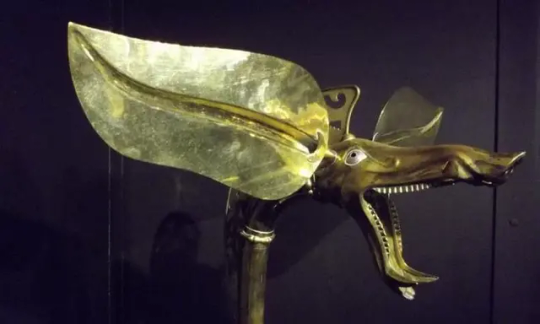

The 'Carnyx' Nightmare of the Roman Soldiers
The Carnyx was a brass musical instrument used as a psychological weapon of war by the ancient Celts between 300 BC and 200AD in western and central Europe and beyond.
The carnyx was once widespread throughout much of Europe, although only a dozen or so fragments are known to us.
It was carried by bands of Celtic mercenaries; it was present at the attack on the Greek sanctuary at Delphi in 279 BC; it defied Julius Caesar in Gaul; and it faced Claudius when he invaded Britain. They are even shown on a Buddhist sculpture in India, proof of the far-flung connections of the Iron Age world.
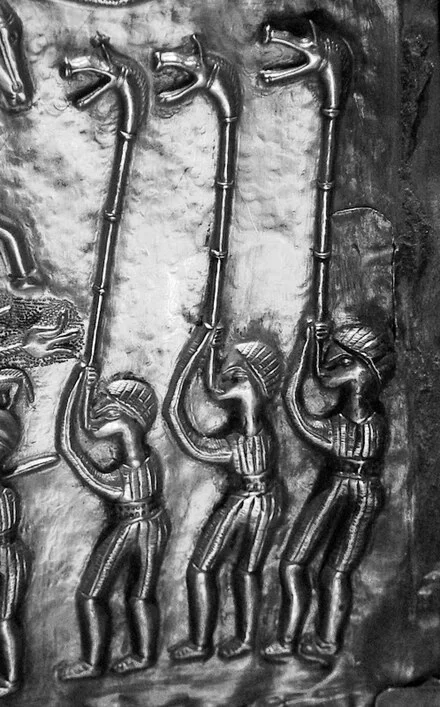
However, they were not only used by the Celts; they were also used by the Dacians in modern Romania. The term “Celtic” is a complicated one. The concept of a pan-European Celtic culture is a myth; rather, aspects of art and technology were shared across vast distances by diverse cultures. The carnyx was one example of this.
A 12-foot-long, thin bronze tube with right-angle bends on both ends made up the carnyx. The lower end ended in a mouthpiece, and the upper end flared out into a bell that was usually decorated to look like a wild boar’s had. Historians believe it had a tongue that flapped up and down, increasing the noise made by the instrument. The carnyx was played upright so that the boar’s head bell protruded well above the warriors’ heads. Its primary goal was to create more noise and confusion on the battlefield.
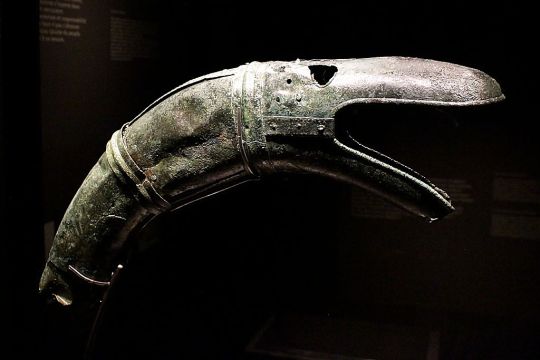
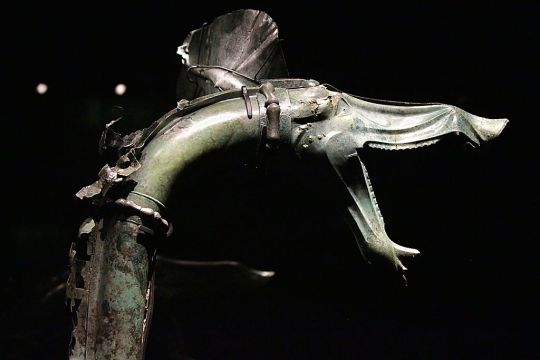
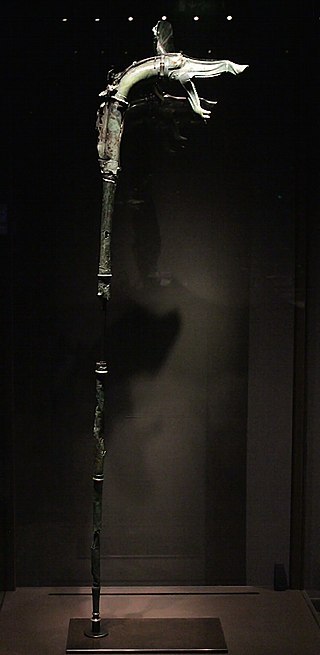
The Greek historian Polybius (206-126BC) was so impressed by the clamor of the Gallic army and the sound of the carnyx, he observed that “there were countless trumpeters and horn blowers and since the whole army was shouting its war cries at the same time there was such a confused sound that the noise seemed to come not only from the trumpeters and the soldiers but also from the countryside which was joining in the echo”.
And the Roman historian Diodorus Siculus wrote, “Their trumpets are also of a peculiar and barbaric kind which produce a harsh, reverberating sound suitable to the confusion of battle.”
Archaeologists discovered a hoard of ritually destroyed weapons in 2004, including a dozen swords, scabbards, spearheads, a shield, bronze helmets, an iron helmet shaped like a swan, a cauldron, animal remains, and seven carnyces. Before the Tintignac discovery, the remains of only five actual carnyces had been found.
The finest was unearthed in Deskford, Scotland in 1816. The Deskford carnyx only has the boar’s head bell and is missing the mane, tongue, and tubing. Images of Carnyx players have been found as well. A Roman denarius, dating from 48 BC bears a representation of a Carnyx. Three carnyx players are featured prominently on the Gundestrup Cauldron, which was found in a Danish peat bog.
One of the seven found at Tintignac, on the other hand, was almost entirely complete. The Tintignac Carnyx was broken into 40 pieces. When puzzled back together, it was found to be just an inch short of six feet long with a single missing section of the tube. The bell was a boar’s head with protruding tusks and large pointed ears. Once restored, the Tintignac Carnyx proved to be the first virtually complete carnyx ever found.
By Leman Altuntaş.
Music video by John Kenny.
#The Carnyx#The 'Carnyx' Nightmare of the Roman Soldiers#Iron Age war trumpet#ancient artifacts#archeology#archeolgst#history#history news#ancient culture#ancient civilizations#celtic mythology#celtic history#roman history#roman empire#roman legion
3K notes
·
View notes
Text
How history directly plays a part in the colonization of Palestine
"The modern claim that Joseph's Tomb is directly related to the biblical Joseph appears to have emerged as a result of claims by William Cooke Taylor in the 1830s. Cooke was an Irish journalist traveling in the area motivated by interest in biblical history but with no expertise in the field. Although in his writings he claims the site was believed be the tomb of the patriarch and that all the religions agreed as much, no other geographers who ventured into the area in the decades that followed reported anything of the sort. And it is unclear from his writings what local Palestinians, the people who were actually living in and around the shrine and worshipping there, believed about the shrine. British geographers subsequently took up Taylor's claim, however, and over the years it was forgotten that it had been more or less made up based on conjecture.
But the claims of biblical archaeologists had a strong role in how the Zionist movement would come to understand and conceive of the landscape.6 As European Jews migrated to Palestine in the first half of the twentieth century, they drew upon biblical archeology's claims. They adopted archeologists' claims that Palestinian holy sites were directly linked to ancient biblical figures. In many cases, they focused on occupying those sites in order to legitimize the colonial endeavor by giving it a sense of deeper history. In many cases, this would mean evicting the Palestinians who actually frequented these holy sites.
When Israel occupied the West Bank in 1967, religious Zionists began flocking to Joseph's Tomb. The tomb, which was previously open to pilgrims of all faiths, began to fall under exclusively Jewish control. As growing numbers of armed Jewish settlers were escorted to the tomb under military escort, the area became increasingly viewed with apprehension by Palestinians living around the site. In 1975, the Israeli military banned Palestinians – that is, the Samaritans, Muslims, and Christians living around the site – from visiting, a ban that has remained in place until this day. When I visited in summer 2015, the tomb was shut closed, but a sympathetic guard allowed me and a friend to look around, under his close watch.
Unsurprisingly, the ban has ignited intense anger over the years. This is true particularly given that frequent visits by Jewish settlers to the shrine are accompanied by hundreds of Israeli soldiers, who enter the area and run atop the rooftops of local Palestinians to “secure” the tomb. As a result, Joseph's Tomb has increasingly become associated with the Israeli military and settlement movement in the eyes of Palestinians. Its presence has become an excuse for frequent military incursions that provoke clashes and lead to arrests and many injuries in the neighborhood.7
Some fear that Israelis will attempt to take over the shrine to build an Israeli settlement around it. This fear is not unfounded, given the fact that Israeli settlers have done exactly that all across the West Bank in places they believe are connected in some way to Jewish biblical history. The notoriously violent Jewish settlements in Hebron, for example, were built there due to the location of the Tomb of the Patriarchs in that southern West Bank town. Following the initial years of settlement, settlers even managed to convince Israeli authorities to physically divide the shrine – which is holy to local Palestinians – and turn the whole area into a heavily-militarized complex. Other shrines have become excuses for the Israeli military to build army bases inside Palestinian towns, like Rachel's Tomb in Bethlehem – which is surrounded by twenty-foot high concrete walls on three sides to block Palestinian access. The village of Nabi Samwel near Jerusalem, meanwhile, was demolished in its entirety to provide Jewish settlers access to the tomb at its heart."
—Excerpt from Why Do Palestinians Burn Jewish Holy Sites? The Fraught History of Joseph's Tomb by Alex Shams
787 notes
·
View notes